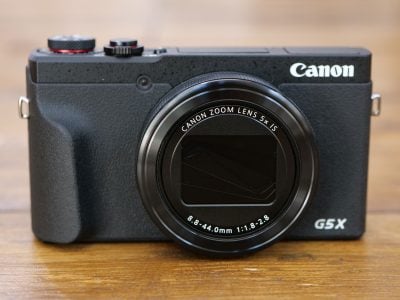Canon PowerShot G5X II review
-
-
Written by Gordon Laing
Intro
The Canon PowerShot G5X Mark II is a high-end compact with a 1in sensor, 5x / 24-120mm zoom, popup viewfinder, tilting touchscreen, fast bursts and 4k video. Announced in July 2019, it replaces the three year old PowerShot G5X and adapts its design to become closer to Sony’s popular RX100 series.
The original PowerShot G5X took the G7X’s 4.2x zoom and sensor, but housed them in a chunkier mini DSLR-styled body with a more substantial grip, a viewfinder head and fully-articulated screen. With the G5X Mark II though, Canon’s completely redesigned the body, making it much closer to the G7X, and even closer still to Sony’s RX100 series. As such the viewfinder – a key benefit over the G7X – is now housed within the body and popped-up for use, while the fully-articulated screen has been swapped for one that now only tilts vertically, although it can still face the subject. These modifications allow the G5X II to become more pocketable than before, indeed only slightly thicker than the G7X III, while additionally sporting a new slightly longer lens with a 5x / 24-120mm f1.8-2.8 range.
After several generations of PowerShot G’s using the same 1in sensor, Canon’s equipped the G5X II (as well as the G7X III launched alongside it) with a stacked CMOS version – capturing the same 20 Megapixel resolution as before, but considerably quicker, allowing uncropped 4k video at 25 or 30p, 1080 video up to 120p and fast bursts including a RAW mode at 30fps. I’m guessing it’s the same sensor Sony used in the RX100 IV which means it sadly lacks the phase-detect autofocus of the later Mark V, but at least you’re getting the video and burst upgrades.
I’ve filmed two in-depth videos about the G5X II, comparing it to the G7X III and also the Sony RX100 VII for good measure. The first looks at all the general design and photographic features, while the second concentrates on comparing their capabilities as vlogging cameras- be sure to watch them both for a full report on their overall features. All below!
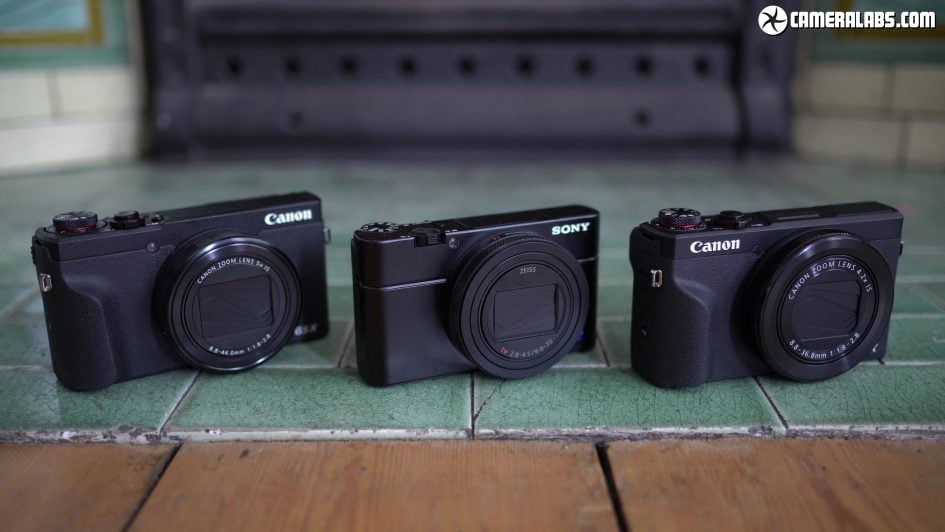
The G7X III and G5X II are both high-end compacts launched in mid-2019. Both share the same photo and video quality, although the G7X III is aimed more at vloggers while the G5X II is more of an EOS companion for stills photography. Both models share a great deal in common, so on this page I’ll be reviewing them side-by-side. I’ll start with what’s the same on both models, then detail what makes them different from each other along with their predecessors and key rivals. So by the end of this you’ll know exactly which one is best for you! Both models arrived around the same time as Sony’s latest RX100, the Mark VII, and since they share a similar target market I’ll compare all three throughout this review.
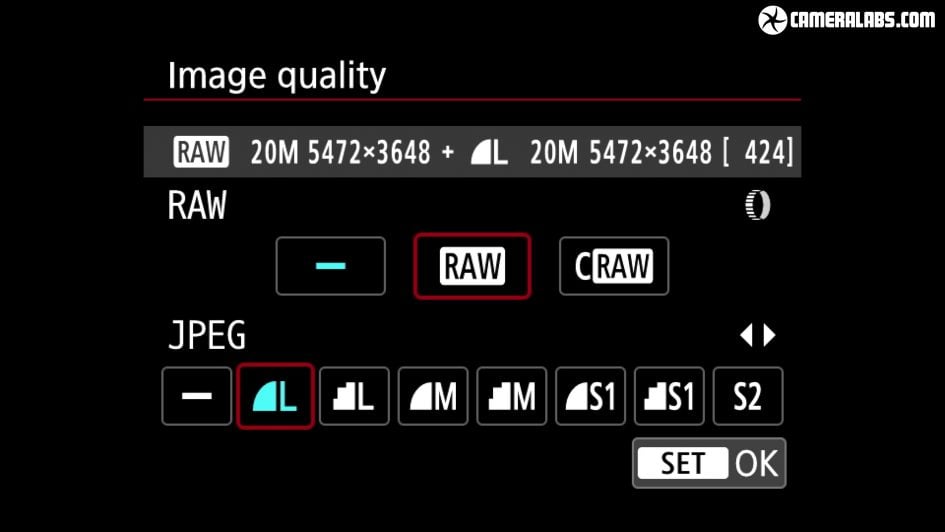
All three cameras employ 1in sensors with 20 megapixels and a stacked CMOS design for fast peformance. A 1in sensor has roughly four times the area of the sensor in your phone, allowing it to deliver lower noise in shadows or dim conditions, as well as retaining tonal details in bright highlights, so the overall photo and video quality, not to mention stabilisation and ergonomics should all be superior to a phone.
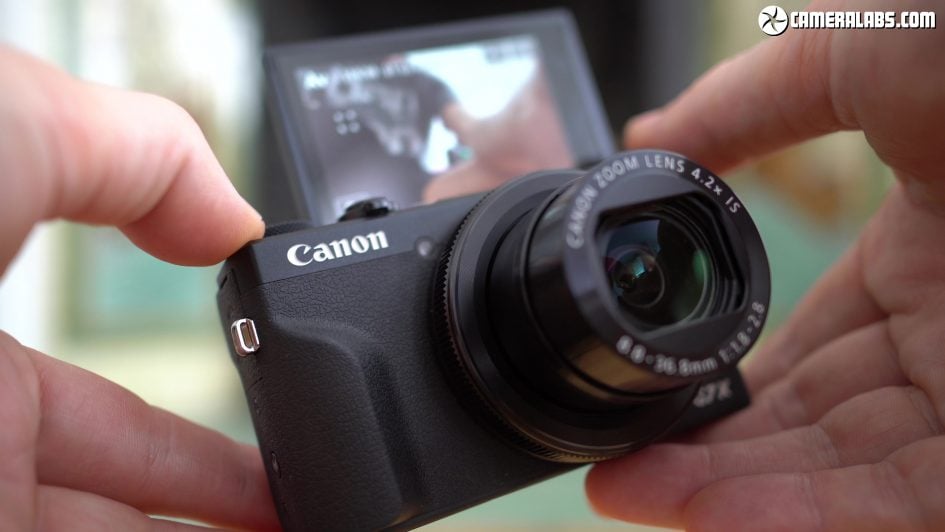
Both Canon models share the same flip-screen which angles down by about 45 degrees or up by 180 degrees to face you for vlogging or selfies. Canon noticed some vloggers holding the camera by the screen so has beefed-up the mechanism over older models.
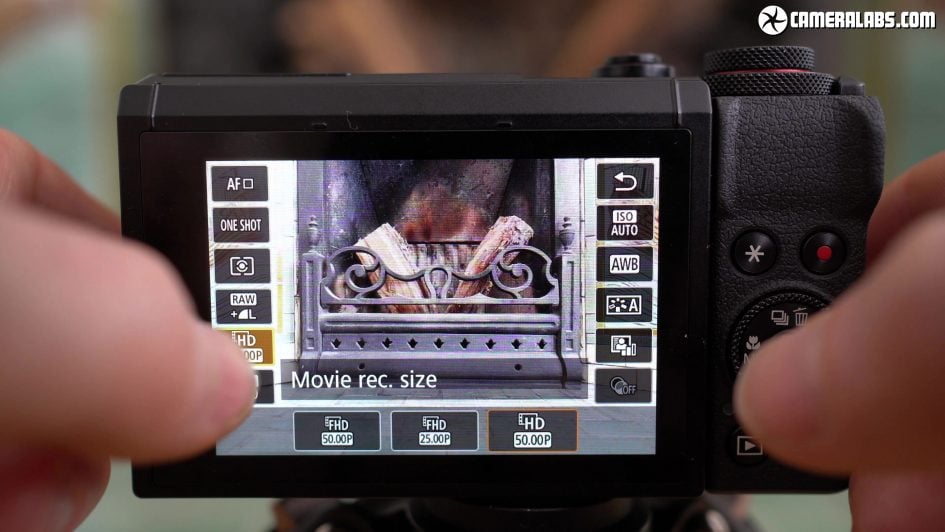
Canon’s touch interface remains one of the best around letting you reposition the AF area, tap the function options, swipe your way through the main menu pages, as well as swiping between images in playback. Now this degree of touch functionality may seem obvious in the age of phones, but it’s yet to reach Sony’s camp where the touchscreen even on the RX100 VII has no effect on the menus and minimal use even in playback. You can of course use the physical controls for navigation if you prefer and despite the size of the cameras, both Canons have very tactile buttons which to me felt much better than the ones on the Sony RX100s.
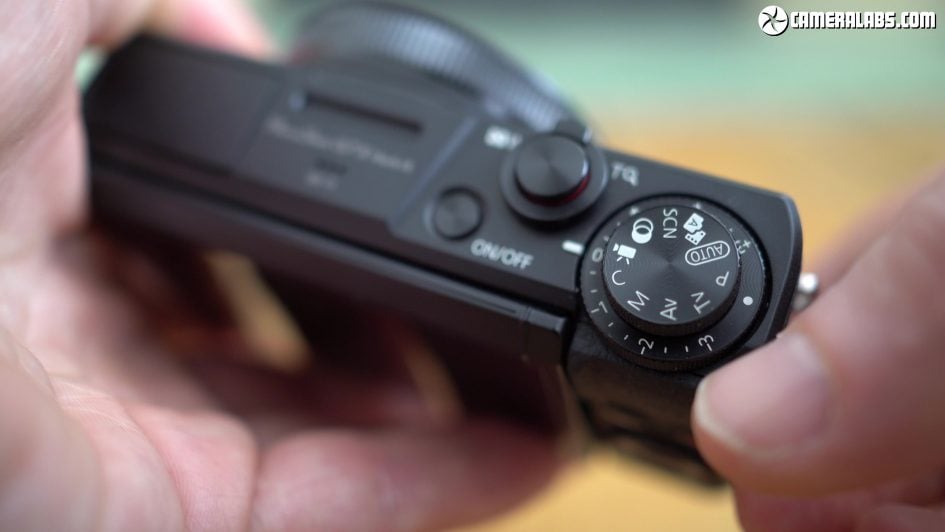
Both Canons also offer a dedicated exposure compensation dial with the main mode dial on top. In contrast the Sony’s lone mode dial is flush to the top surface making its more streamlined shape easier to slip into tighter pockets, but losing out on a dedicated compensation control.
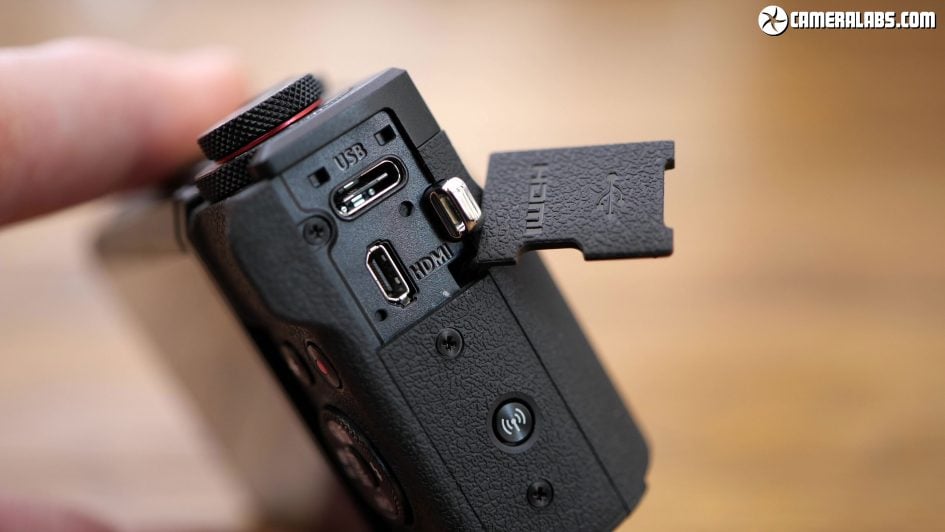
Canon’s equipped both the G7X III and G5X II with Micro HDMI and USB-C ports, while Sony’s stuck with Micro USB on the RX100 VII. All three can charge their batteries internally over USB, although Canon also supplies an external AC charger. All three can also be powered for operation over USB and while the Sony requires you to only have a trickle of charge in the battery for this to work, the Canons amazingly don’t even need the battery to be fitted at all. Just connect it to a USB C supply and you’re good to go. It worked fine with the charger for my 13in MacBook Pro. Good job all thee allow easy USB charging and power delivery though as you’re only looking at around 200 photos or 60 minutes of video per charge.
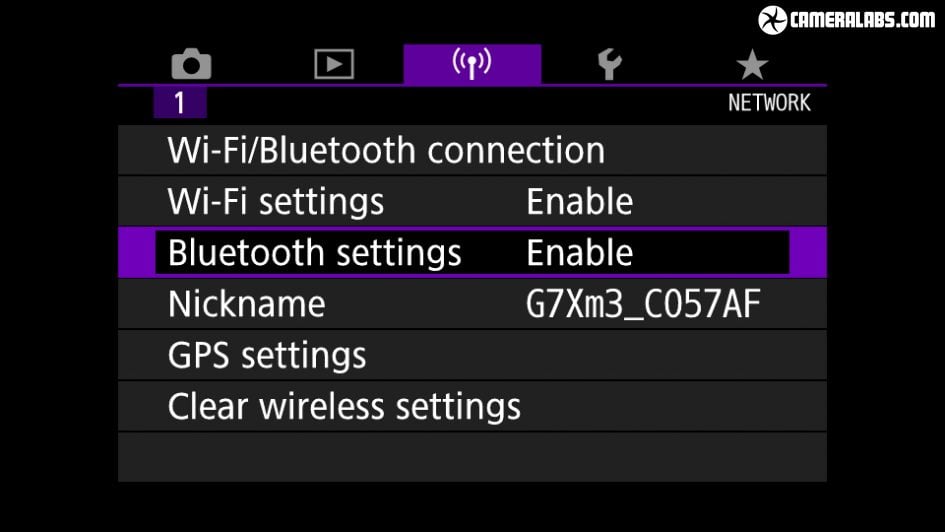
All three cameras have good wireless features with both Wifi for quick photo and video transfer and wireless remote control, as well as Bluetooth for seamless location tagging via your phone as you shoot. The G7X III takes this further with YouTube live streaming I’ll show you later.
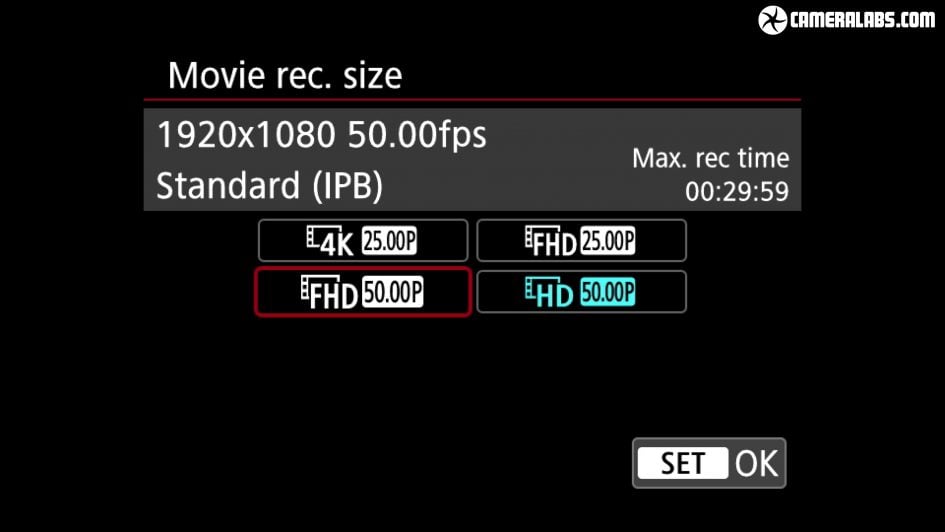
In terms of video, both Canons can film half hour clips of 1080 video at 25, 30, 50 or 60p, depending on the video setting, although there’s no 24p option anymore with no satisfactory explanation as to where it’s gone. High speed 1080 video is also available at 100 or 120p for slow motion. Sadly there’s no sound or autofocus during high speed video on either Canon, unlike the Sony RX100 VII which impressively supports both, not to mention allowing filming in 24p if desired.
Above: Download the original file (Registered members of Vimeo only). Here’s the G7X III filming in 1080 at 100p for a four times slow-down. The footage is slowed in-camera to 25p for PAL regions or 30p for NTSC, so this is what you see when playing it back; again there’s no sound or continuous AF in the high speed video mode, unlike Sony which gives you both.
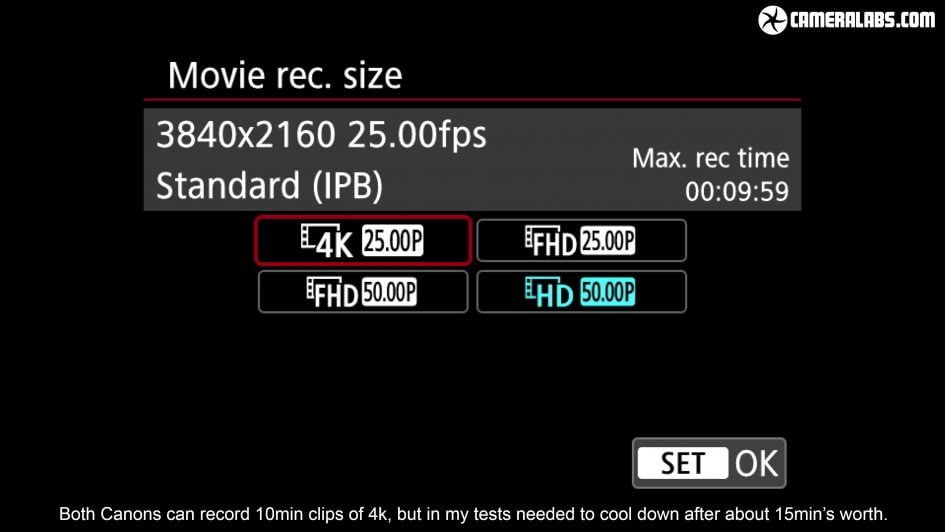
The G7X III and G5X II finally join the RX100 series in offering 4k video, although there’s a few key differences. Canon only lets you film 4k in 25p or 30p depending on the video setting, while Sony lets you choose between 24, 25 or 30p. Canon’s 4k is uncropped compared to a minor crop for 4k on the Sony, although in my tests the RX100 VII’s 4k video enjoyed more detail. In terms of recording times, the Canon’s will record 10 minute clips of 4k compared to 5 minute clips on the Sony, although if you reduce the heat warning on the RX100 VII I found it could actually record just over an hour of 1080 or 4k on a single clip.
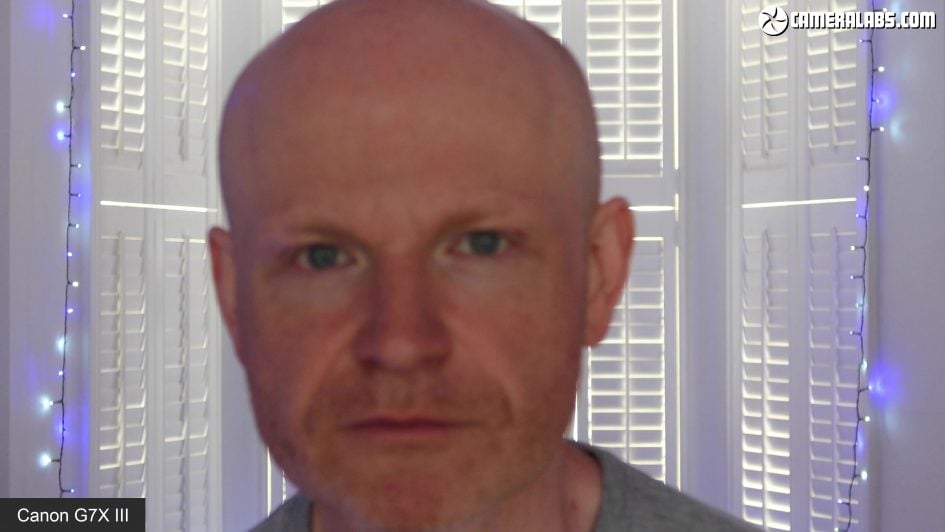
Both Canons employ a contrast-based autofocus system which can attempt to refocus while filming, but with variable success.
Above: Download the original file (Registered members of Vimeo only). In this clip using the touchscreen to pull-focus between the can in the foreground and the back of the shop, the G5X II is actually doing a fair job, although compare it to the RX100 VII and you’ll see the phase-detect AF on the Sony is more confident. You can really see the difference though when filming people where the G5X II needs a short pause for its focus to catch up with the subject, and if they keep moving back and forth, it struggles to maintain a sharp image. In contrast the phase detect AF system of the RX100 5, 6 and 7 feels much more confident, keeping subjects sharper as they move back and forth.
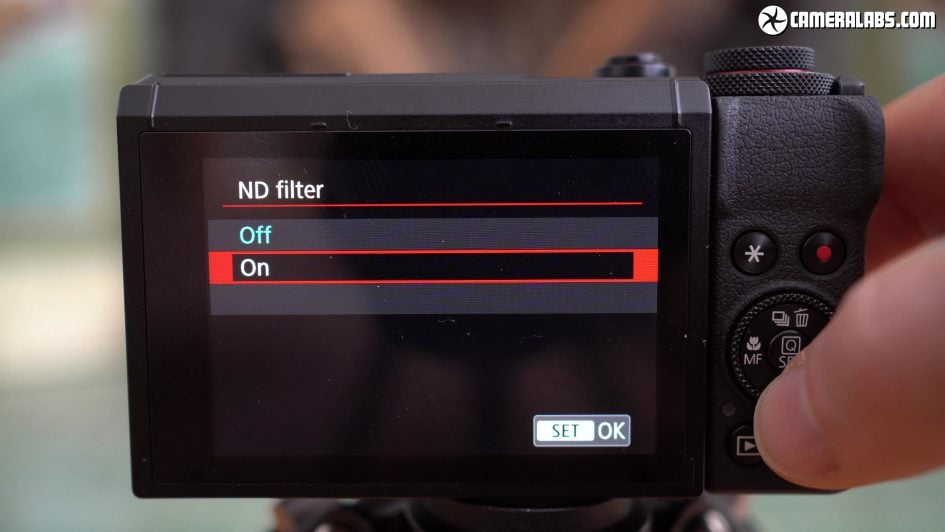
Both Canon’s however enjoy a key advantage over the Sony RX100 VII when it comes to filming video and that’s the presence of a built-in ND filter which when enabled makes it easier to deploy motion-friendly shutter speeds in bright conditions. In contrast if you want to film with slower shutters on the RX100 VII you’ll need to either fit a third party magnetic filter system, close the aperture down or seek out dimmer conditions. Otherwise you’re looking at using fast shutter speeds with a choppy effect.
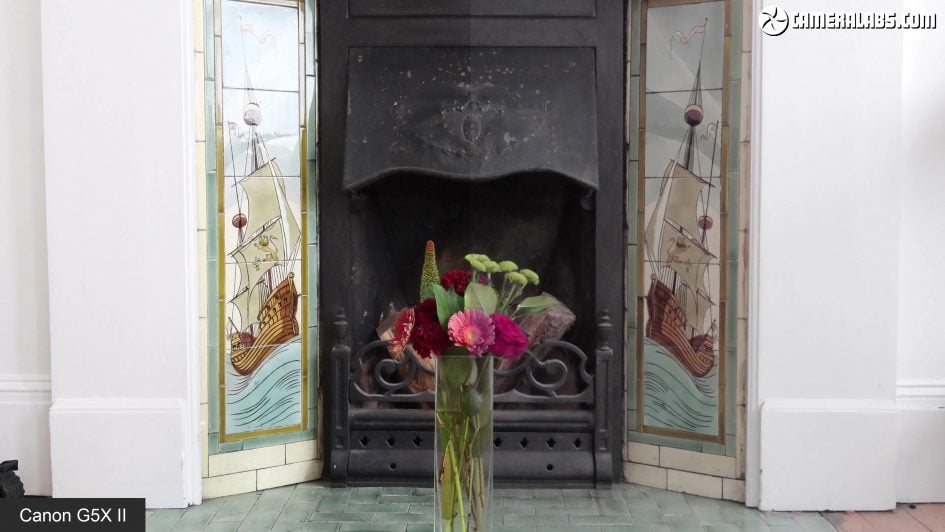
If you’re into grading video, the best option on the Canons is the Neutral profile seen here on the right with all the parameters turned to their lowest settings. The Sonys are better in this regard with their flatter S-Log profiles.
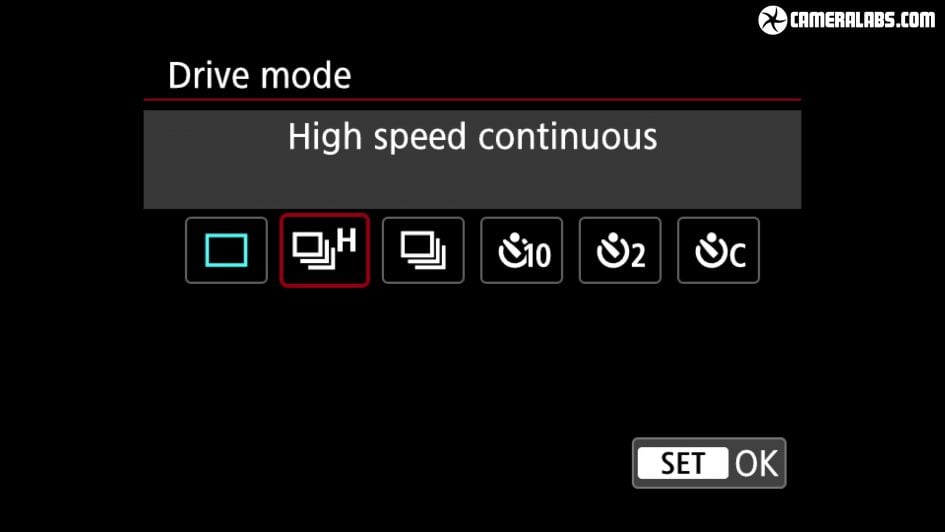
The G7X III and G5X II share the same burst shooting capabilities with a top speed of 20fps in Single AF mode. You can see it in action here as the block is dropped in the water, although if you want to refocus on a subject moving towards or away from you with Servo AF enabled, the burst speed falls to 8fps.
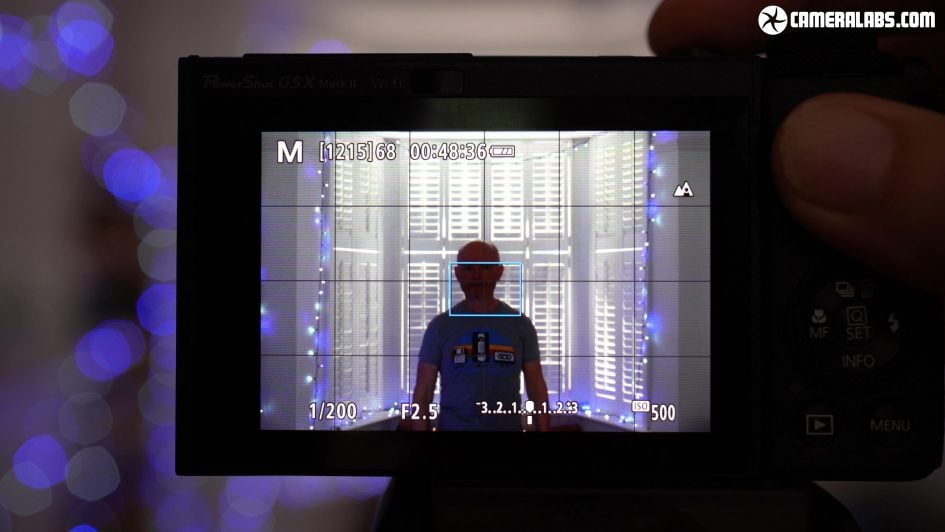
Here’s the G7X III attempting to refocus on me simply walking towards the camera and you can see its contrast-based AF system becomes much less confident. When set to Servo AF for continuous autofocus, you also lose face detection and are limited to a single AF area, so woe-betide if you move away from it. See the actual clip in my main video review at the top of this page.
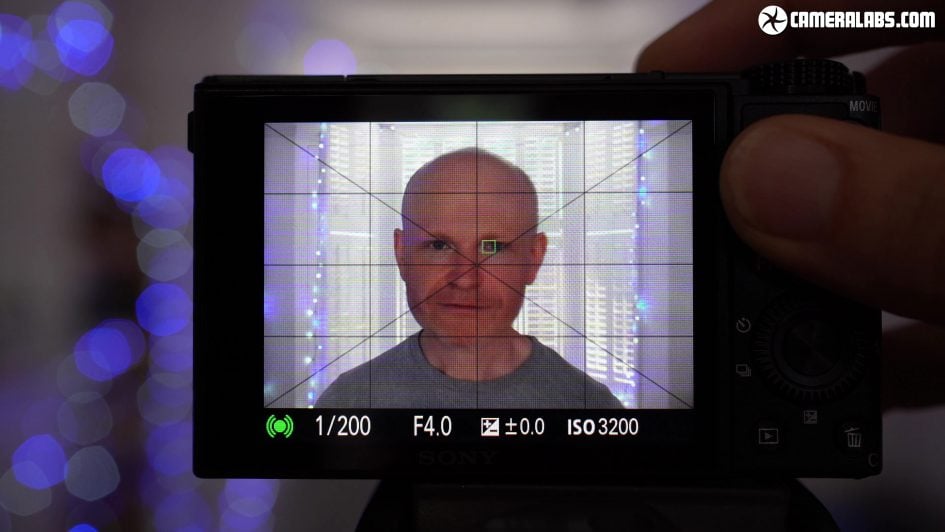
In stark contrast, here’s Sony’s RX100 VII shooting at 20fps with face and eye detection working just fine with continuous AF across the entire frame, while its phase-detect autofocus system is more confident for refocusing on moving subjects than the contrast system on the Canons. See the actual clip in my main video review at the top of this page.
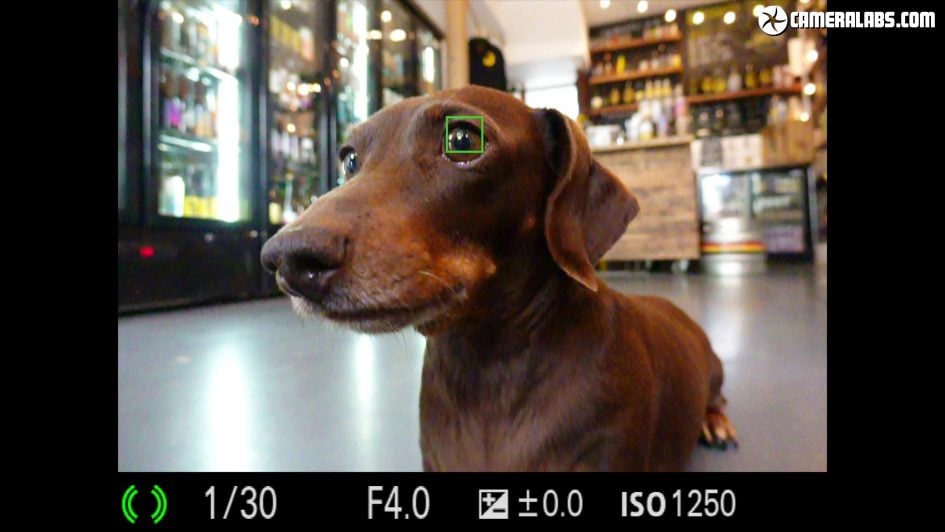
The Sony will even now offer eye detection for animals, which coupled with everything else makes it far preferable for photographing sports, wildlife or active kids and pets.
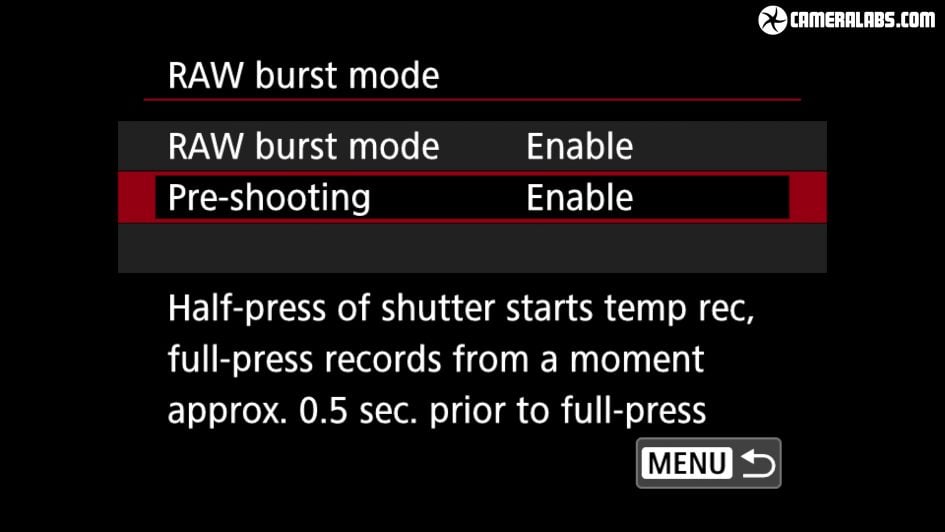
With the G7X III and G5X II, Canon also introduced a new RAW burst mode which exploits the speed of the stacked sensor to shoot a burst of RAW files at 30fps for up to a generous 70 frames. Better still, it offers a pre-shooting option that keeps a rolling buffer of the last half-second’s worth of action as you keep the shutter half-pressed – then as you push down fully, these last 15 images are committed to memory plus up to 55 more. These are stored in a single large file which can be navigated during playback on the cameras.
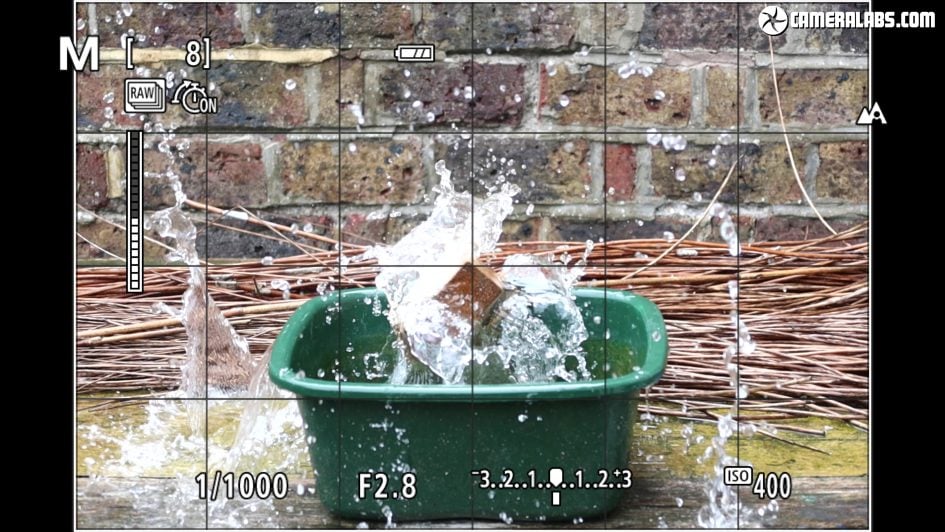
You can see it in action here with the vertical bar on the left representing the state of the buffer filling as I half-press the shutter. I then pushed it fully the moment I saw the block enter the frame by which time it had already hit the water.
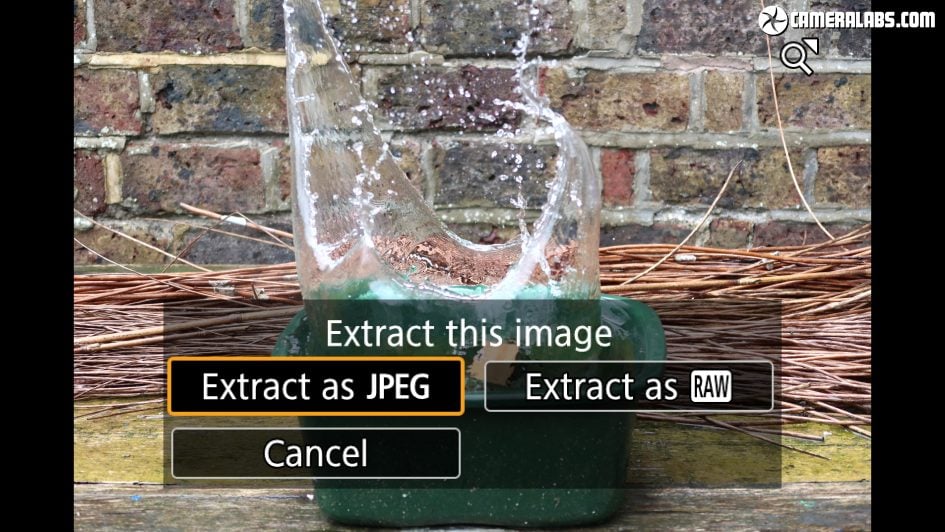
Without pre-shooting I’d have missed the initial impact but thanks to the half-second in the bank I can effectively rewind and extract JPEGs or RAW files of the key moments. It’s not dissimilar to the 4 and 6K Photo modes on Panasonic cameras, but they operate at lower resolutions and only allow you to extract JPEGs. Not to be outdone, Sony also introduced a new higher speed mode on the RX100 VII which can shoot up to 90fps, but only for seven JPEG images and crucially without the benefit of pre-buffering, making it almost impossible to time the extremely short burst to correspond with your action.
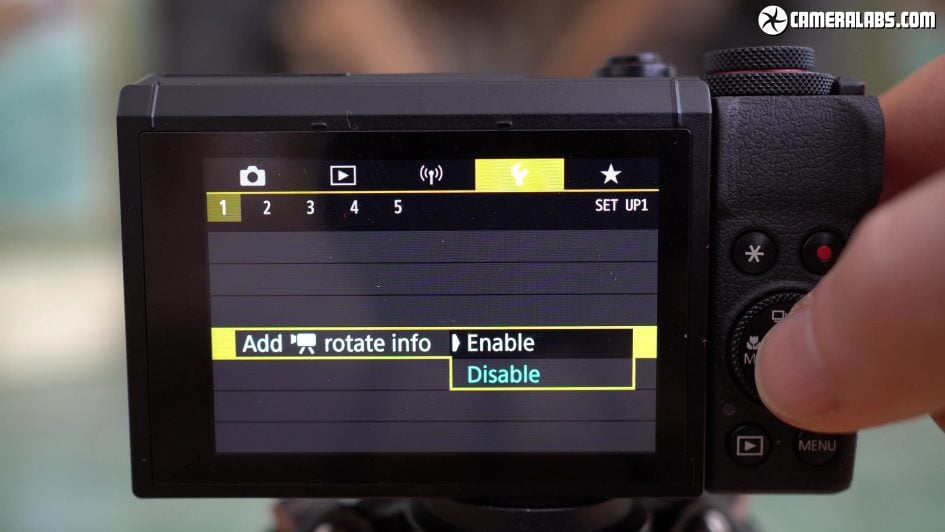
The Canons and Sony can now also preserve the orientation of video filmed vertically for use on Instagram stories or other phone apps. On the Canons you can choose whether the original orientation is respected or not, but in a crucial difference with the RX100 VII, I found the Canon app imported video with sound as you’d expect, whereas the Sony app didn’t import audio onto my phone so my clips were silent. I think this is an incompatibility with the audio in Sony’s XAVCS and Android phones, and I resolved it by converting the file on my computer, but that’s nowhere as convenient as wirelessly copying the videos from the Canons onto your phone and being able to post them as stories straightaway.
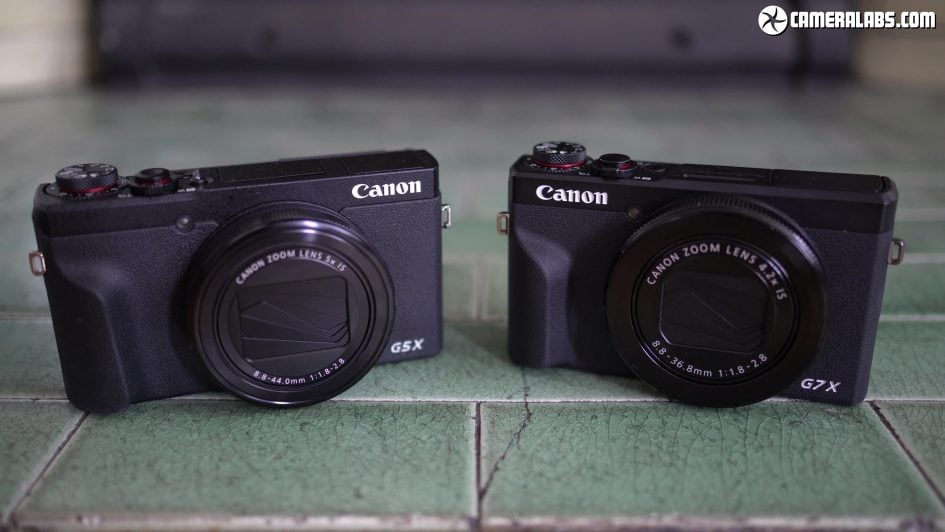
Ok so that’s everything the Canon G7X III and G5X II have in common. Now for what makes them different.

Most obviously, there’s their respective zoom ranges of 24-100mm on the G7X III versus 24-120mm on the G5X II. Here’s how the G7X III’s range looks zooming from 24mm to its longest 100mm. The aperture is f1.8-2.8 and the closest focusing distance is 5cm at 24mm and 40cm at 100mm. The maximum aperture starts at f1.8 at 24mm then slows to f2 at 28mm, f2.2 at 35mm, f2.5 at 39mm, then reaches its minimum aperture of f2.8 at 55mm and stays with it all the way up to 100mm.

Rather than inheriting the G7X’s 4.2x zoom again, Canon’s developed a new 5x zoom for the G5X II equivalent to 24-120mm while maintaining the f1.8-2.8 focal ratio. The aperture closes to f2 at 27mm, then to f2.2 at 34mm, f2.5 at 44mm, and to the minimum f2.8 from 68mm all the way to 120mm. The closest focusing is 5cm at the wide-end and 20cm at the long-end, the latter allowing it to focus much closer in telephoto than the G7X III.

And now for the Sony RX100 VII’s range which extends from 24-200mm, albeit with a slower f2.8-4.5 aperture. On the RX100 VII, the brightest aperture of f2.8 is only available at the widest focal length of 24mm. At 25mm it reduces to f3.2, then to f3.5 at 30mm, and to f4 at 40mm. The Mark VI impressively maintains the f4 focal ratio between 40 and 109mm after which it reduces to f4.5 for the rest of the range up to 200mm. The closest focusing distance is 8cm at the wide end and 1m at the long end.
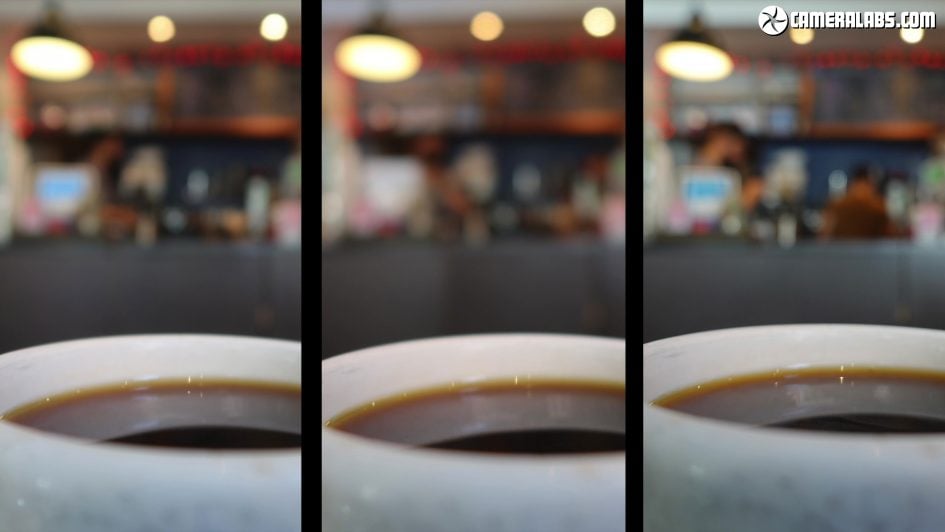
Both Canons have a closest focusing distance of 5cm when zoomed wide to 24mm, and here’s an image showing the kind of depth of field you can expect at close range with the aperture opened fully. The Canon G7X III is on the left, the G5X II in the middle and the Sony RX100 VII on the right; both Canon’s allowed f1.8, while the Sony’s maximum aperture at 24mm is f2.8, and I took this at 8cm which is the closest focusing of the Sony at 24mm.

Zoom each camera to their telephoto end though and their respective closest focusing distances vary considerably. The Sony RX100 VII’s closest focusing at 200mm is 1m, the G7X III at 100mm is 40cm, while the G5X II at 120mm is 20cm, allowing it to focus much closer when zoomed-in. So what does that mean in practice for macro-shooters? On the left is the Canon G7X III at 100mm from 40cm away, while on the right is the G5X II at 120mm from 20cm away and the difference is dramatic. The G5X II can focus much closer than either the G7X III or RX100 VII when zoomed-in, allowing impressive closeups without the distortion at wide angle. When weighing up the G5X II against the G7X III, the longer range, crisper optics and closer focusing all make it more tempting to photographers.
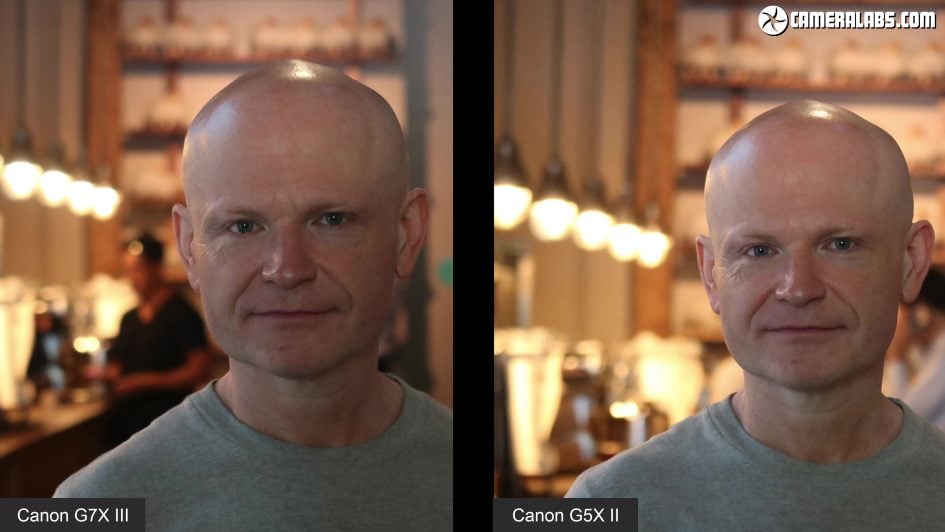
To further illustrate the impact of their telephoto differences, here’s a portrait shot taken with the G7X III at 100mm f2.8 on he left, and with the G5X II at 120mm f2.8 on the right. It can be subtle, but I prefer the perspective and slightly shallower depth of field on the G5X II version.
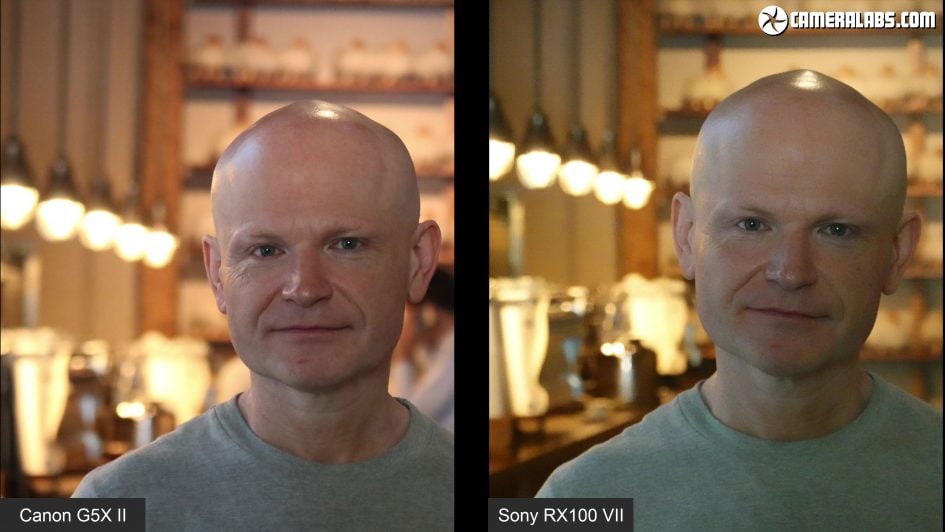
Just for comparison, here’s the Sony RX100 VII at 120mm on the right to match the coverage of the G5X II on the left, but where it operates at a slower f4 focal ratio. For me the biggest difference between the Canon and Sony here isn’t the depth of field, or even the benefit of a lower ISO on the brighter Canon lens, but the image processing and colours out of camera. It’s entirely personal, but I prefer the look of the portrait on the left from the G5X II versus the one on the right from the Sony.
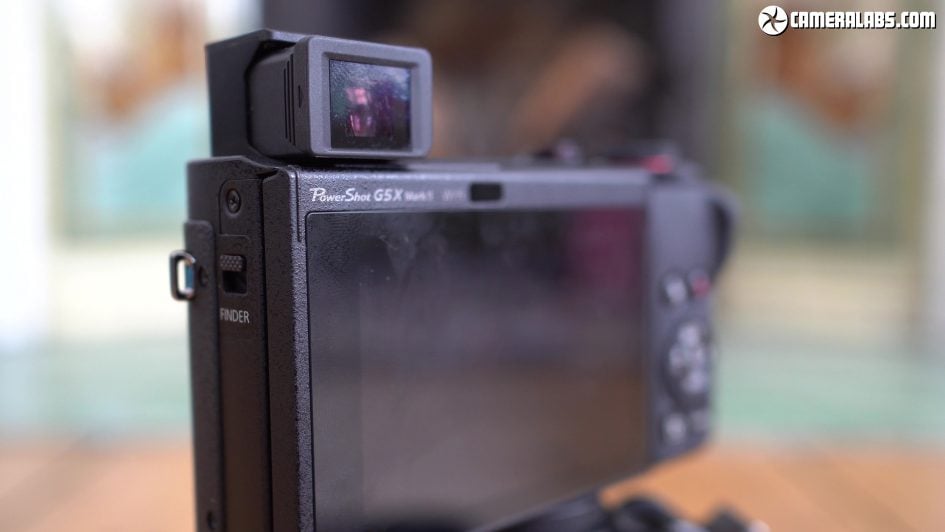
Beyond the longer zoom, another major difference between the two Canons is the built-in viewfinder on the G5X II. It pops up and is pulled outwards in a two-step motion which isn’t as quick or convenient as the one-touch movement of the Sony RX100 6 and 7, but simply having a viewfinder of any description made the G5X II more pleasant to use for general photography than the G7X III. I shot with both cameras side-by-side and really missed having it on the G7X III, but equally it does add to the price and if you’re mostly vlogging, you’ll be using the screen.
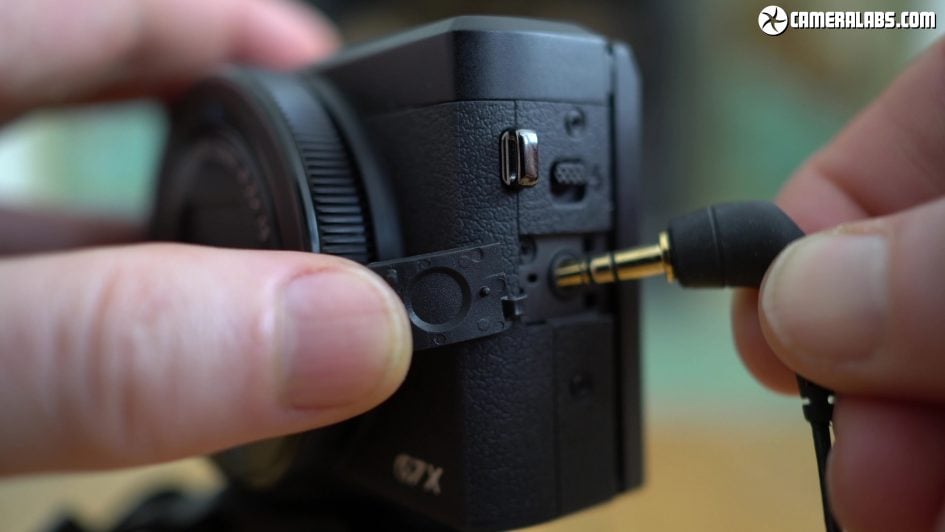
Before you think all the benefits are skewed towards the G5X II, the G7X III fights back with a 3.5mm microphone input. This allows you to connect a microphone for far better audio quality on movies.
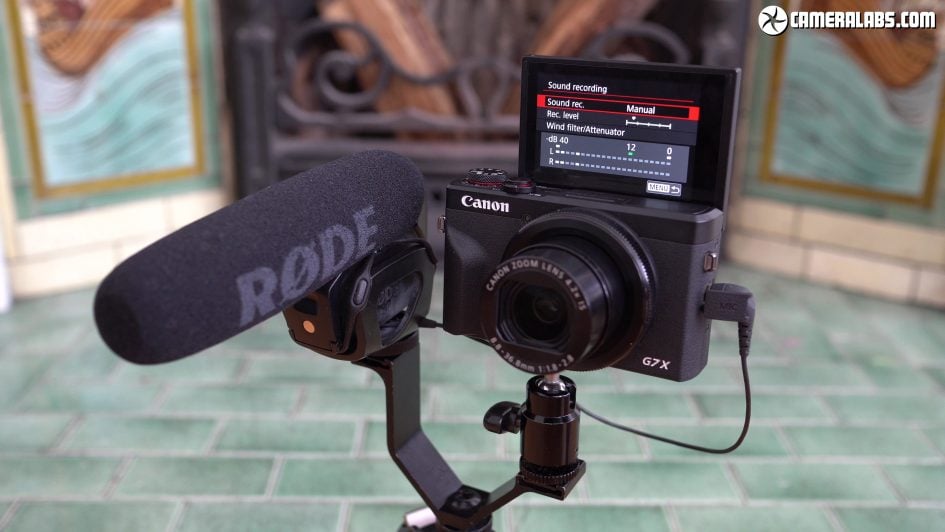
While there’s no hotshoe for mounting an accessory, you can easily use a bracket or simply connect a lav mic directly. The ability to connect a mic is pretty unique on a camera of this size, although Sony’s RX100 VII also has one. I have a separate video comparing these three cameras for vlogging, along with one dedicated to the G7X III alone which demonstrates their audio, video and stabilisation; both are near the top of this page.
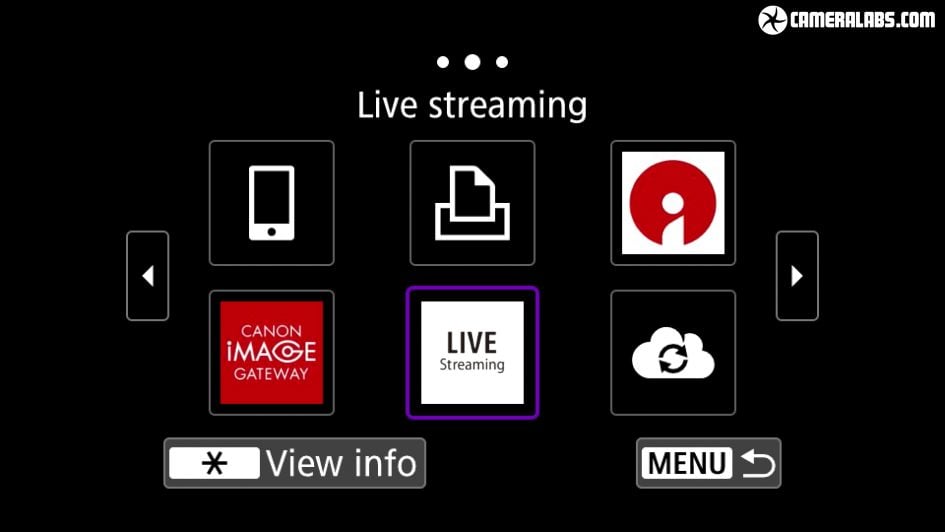
The G7X III extends its superior credentials over its sibling for video by offering the chance to live stream direct to YouTube over Wifi. In my tests at home on my Virgin broadband, I found the poor upload speed – typically 5Mbit/s during the day – was insufficient to keep a live stream going for more than about two minutes. I had even less joy tethering to 4G on my Three mobile connection on Brighton Pier. In both cases I couldn’t stream effectively, but I believe that’s down to my own internet speeds. Your mileage will of course vary and if you have faster internet, you should be able to live stream for longer. Either way, it’s a cool new feature that I’ve not seen on any other camera of its class.
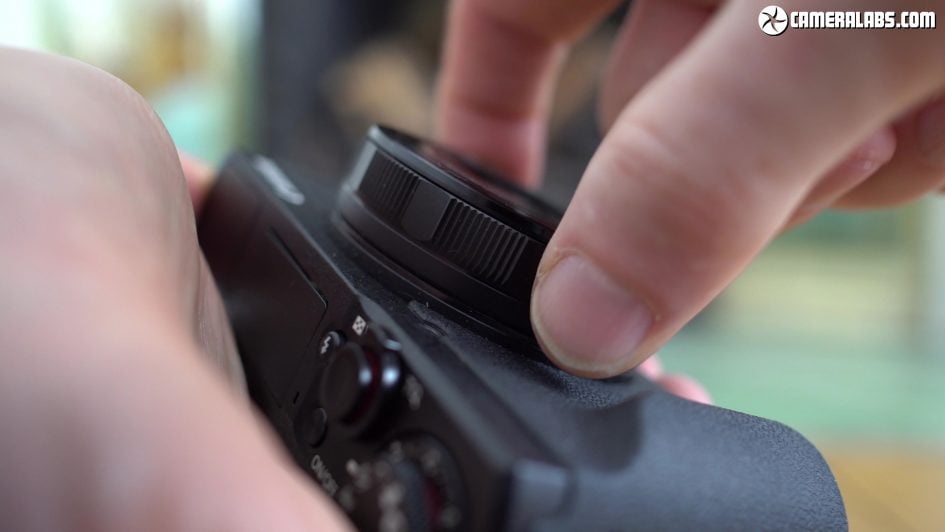
While the zoom range, viewfinder, mic input and live streaming are the main differences between the G5X II and G7X III, there are a number of subtle variations on their bodies. Both have clicky lens control rings which no longer declick for smooth operation, but they look and feel different – here’s the G5X II’s ring.
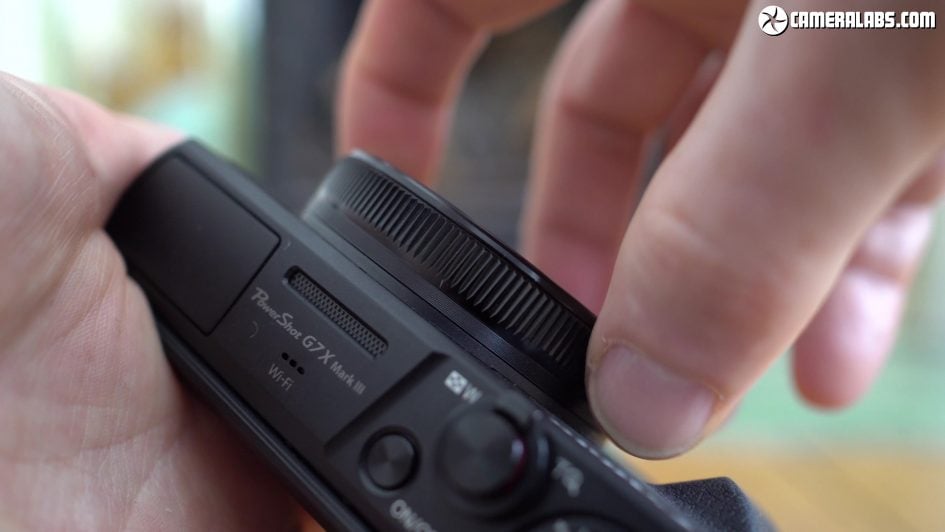
And now here’s the control ring for the G7X III.
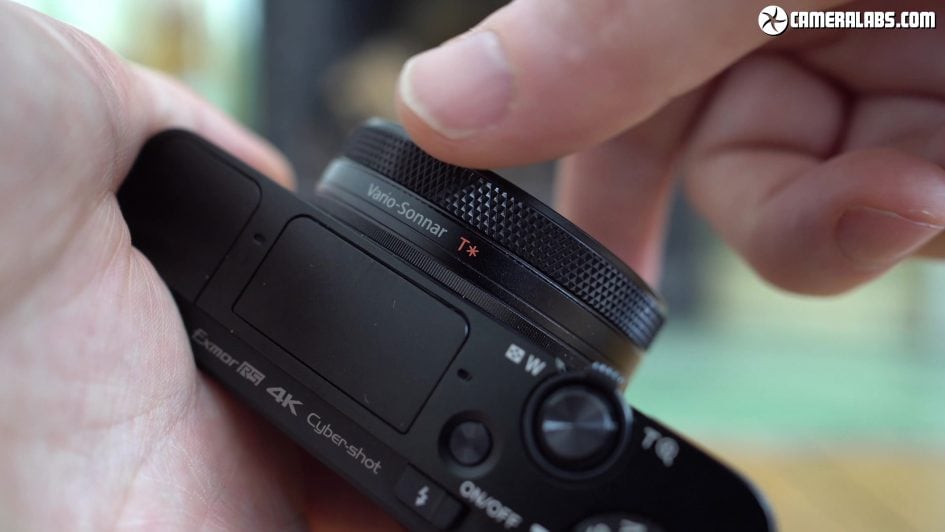
Meanwhile Sony’s gone for a silent smooth lens ring which is ideal for video, but gives no tactile feedback for general photography.
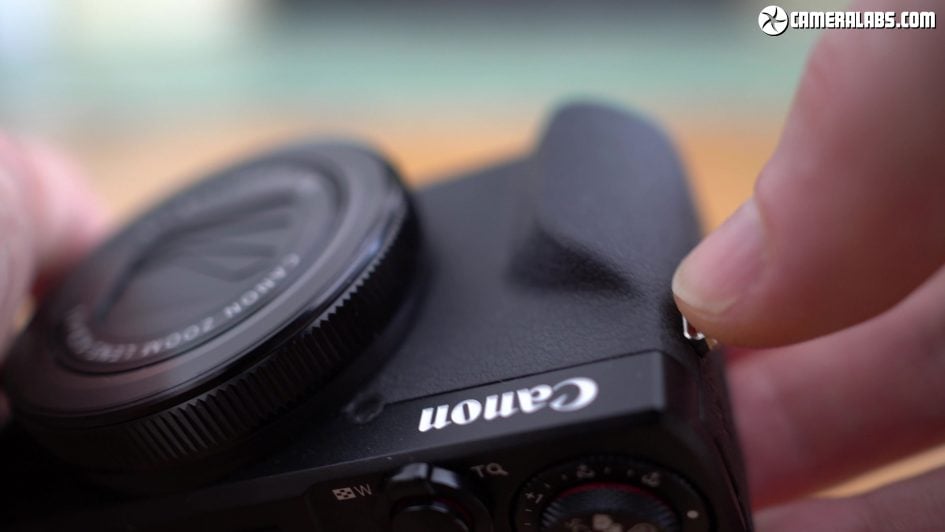
Both Canon’s have small but effective front grips that make them far more comfortable to hold and use than the smooth-fronted Sony. Here’s the G7X III’s grip.
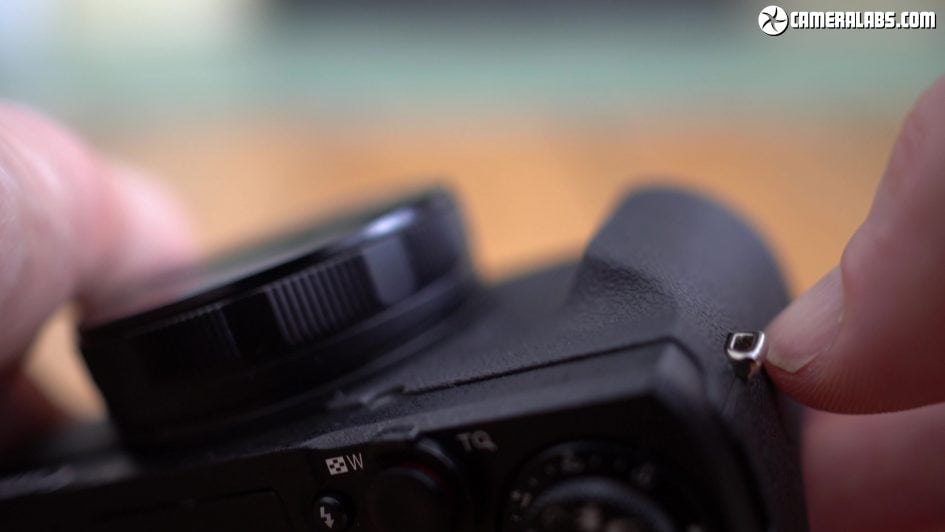
And now here’s the slightly different grip of the G5X II. Both Canon’s give you more to hold onto than the Sony.
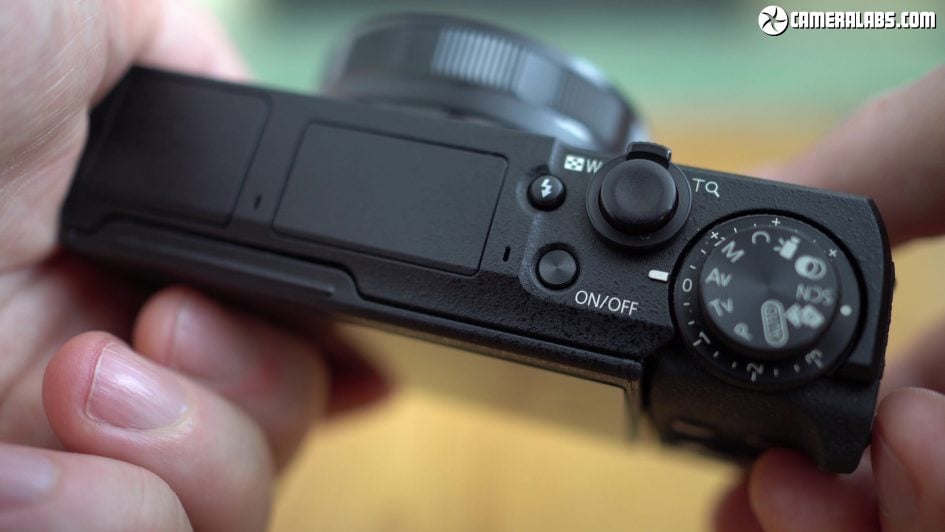
The viewfinder on the G5X II means its popup flash is positioned in the middle of the body versus the corner on the G7X III.
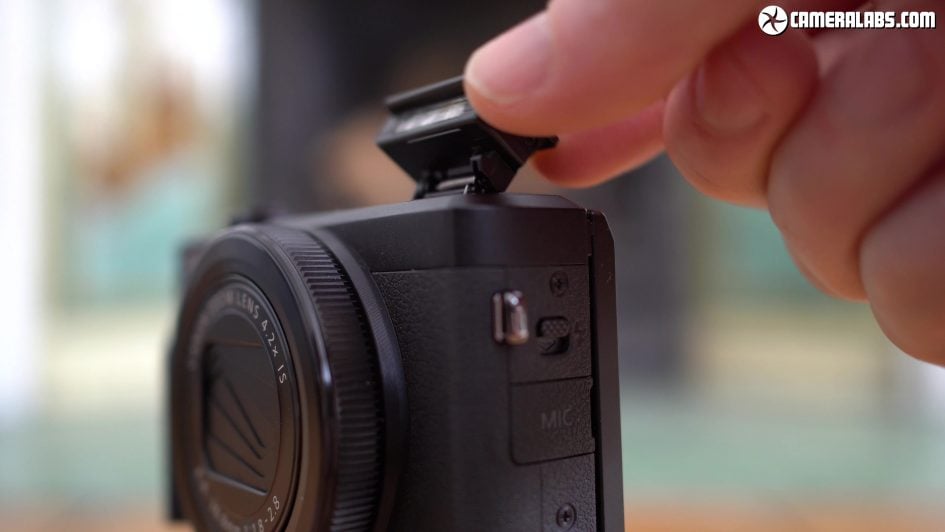
Both can be held in a position pointing upwards for an improvised bounce effect although their modest size means you’ll need a very low roof and close subject to enjoy any impact.
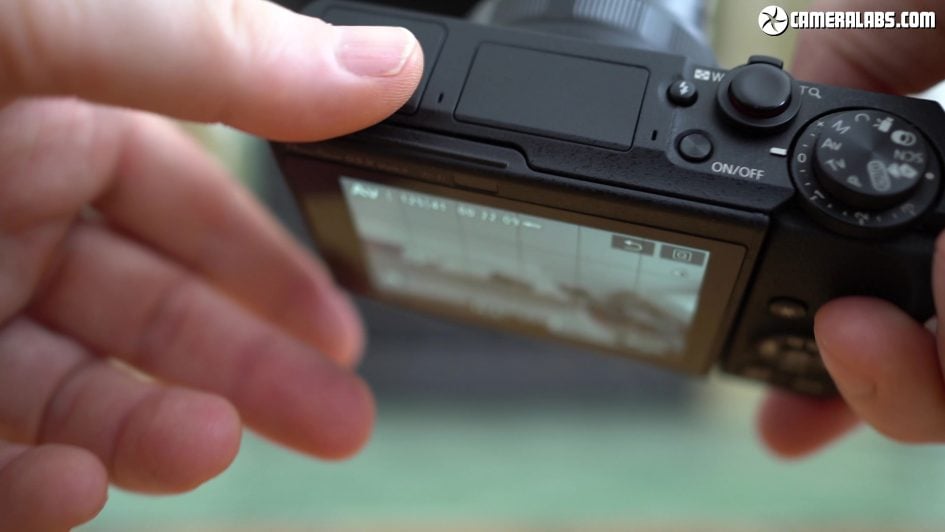
Both share the same screen articulation, although a strip along the top of the G5X II’s display makes it easier to fold down for shooting above head height.
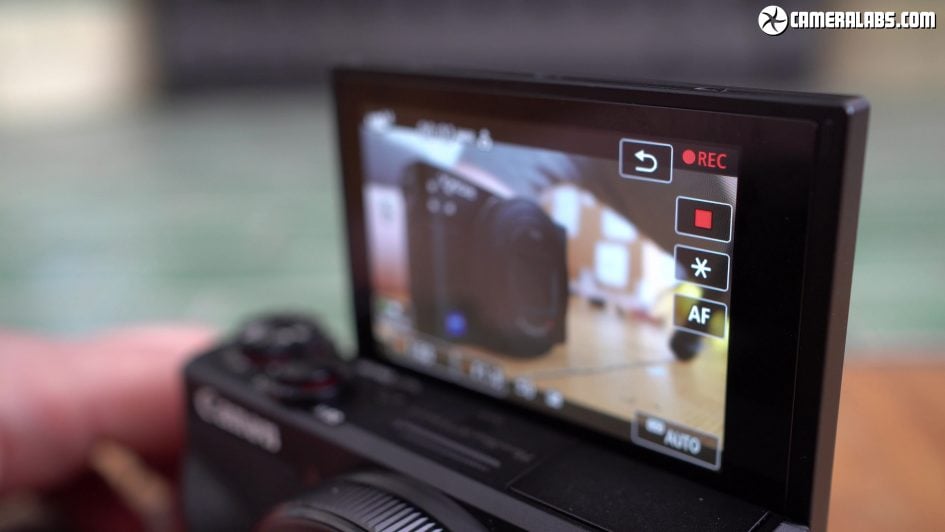
Both have movie record buttons on their rear, but the G7X III adds an extra touch record button in the corner of the screen.
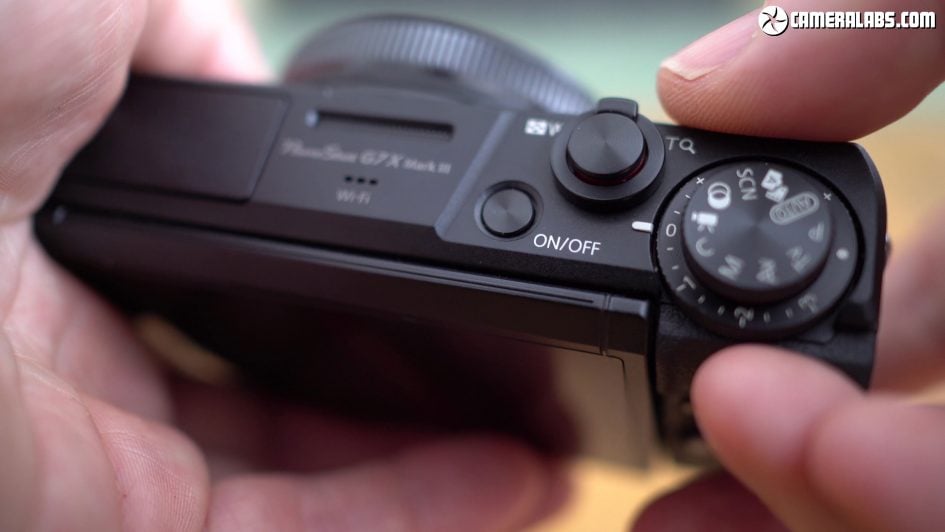
And finally, the shutter release buttons on both bodies are slightly different. It’s slightly domed on the G7X III, but slightly indented on the G5X II (as seen two pictures above) and to my own fingers, I preferred the indent. To be honest none of these design differences are significant, but it is interesting how Canon’s made two otherwise very similar looking cameras feel slightly different when used side-by-side.
Above: Download the original file (Registered members of Vimeo only).
Check prices on the Canon PowerShot G5X II at B&H, Adorama or WEX. Alternatively get yourself a copy of my In Camera book or treat me to a coffee! Thanks!
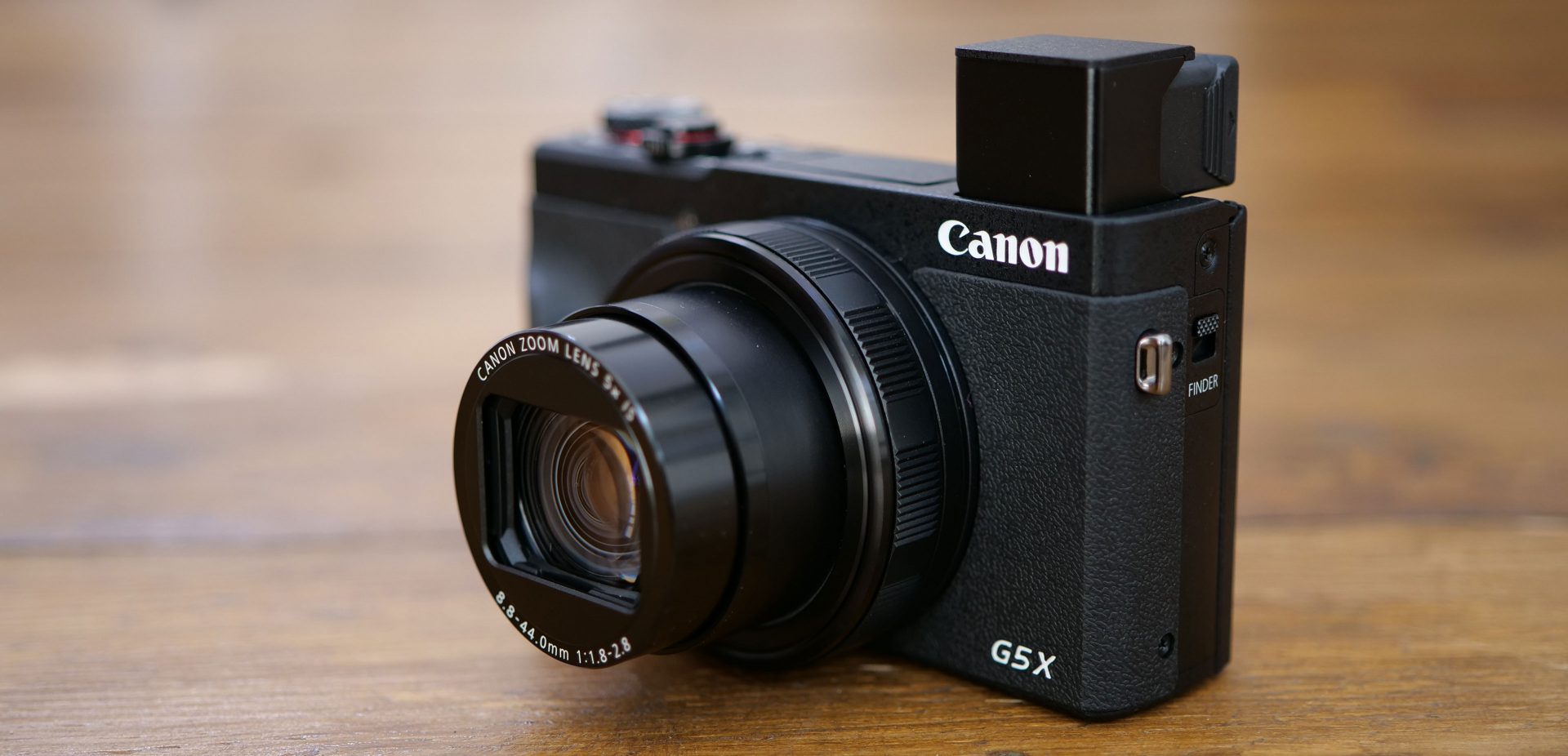
 The Canon PowerShot G5X Mark II is a powerful compact camera with a 20 Megapixel 1in sensor, 5x / 24-120mm zoom, popup viewfinder, tilting touchscreen, fast bursts and 4k video. Canon’s made a U-turn on design, swapping the chunkier DSLR-styling of its predecessor for something more pocketable and more akin to Sony’s RX100 series. So it’s out with the fixed viewfinder hump and side-hinged screen for a popup viewfinder and vertically-tilting display. The grip has shrunk and the front dial lost, but there’s still more to hold onto than the RX100 and the changes have allowed the G5X to become much more pocketable than before. This does however bring it closer to the G7X III with Canon essentially asking you to choose between the popup viewfinder and slightly longer 5x zoom of the G5X versus the mic input and Live Streaming of the G7X III. Couldn’t we just have it all in one body instead, or perhaps do identical versions, with and without viewfinders to meet different price points? There’s also tough competition from Sony’s RX100 VA which gives you the popup viewfinder, tilting screen, 4k video and fast bursts, but with the benefit of more responsive phase-detect autofocus for photos and video, although in its favour the G5X II zooms almost twice as long while also sporting a touchscreen and better grip. Overall the G5X II loses much of what made its predecessor unique in the 1in market, and leaves anyone desiring a mini DSLR-styled compact to aim for the G1X Mark III instead. But by aligning it more closely to its best-selling rival, the G5X II becomes more attractive to a bigger audience. Imagine how much more popular it could have been merged with the G7X III’s connectivity.
The Canon PowerShot G5X Mark II is a powerful compact camera with a 20 Megapixel 1in sensor, 5x / 24-120mm zoom, popup viewfinder, tilting touchscreen, fast bursts and 4k video. Canon’s made a U-turn on design, swapping the chunkier DSLR-styling of its predecessor for something more pocketable and more akin to Sony’s RX100 series. So it’s out with the fixed viewfinder hump and side-hinged screen for a popup viewfinder and vertically-tilting display. The grip has shrunk and the front dial lost, but there’s still more to hold onto than the RX100 and the changes have allowed the G5X to become much more pocketable than before. This does however bring it closer to the G7X III with Canon essentially asking you to choose between the popup viewfinder and slightly longer 5x zoom of the G5X versus the mic input and Live Streaming of the G7X III. Couldn’t we just have it all in one body instead, or perhaps do identical versions, with and without viewfinders to meet different price points? There’s also tough competition from Sony’s RX100 VA which gives you the popup viewfinder, tilting screen, 4k video and fast bursts, but with the benefit of more responsive phase-detect autofocus for photos and video, although in its favour the G5X II zooms almost twice as long while also sporting a touchscreen and better grip. Overall the G5X II loses much of what made its predecessor unique in the 1in market, and leaves anyone desiring a mini DSLR-styled compact to aim for the G1X Mark III instead. But by aligning it more closely to its best-selling rival, the G5X II becomes more attractive to a bigger audience. Imagine how much more popular it could have been merged with the G7X III’s connectivity.



